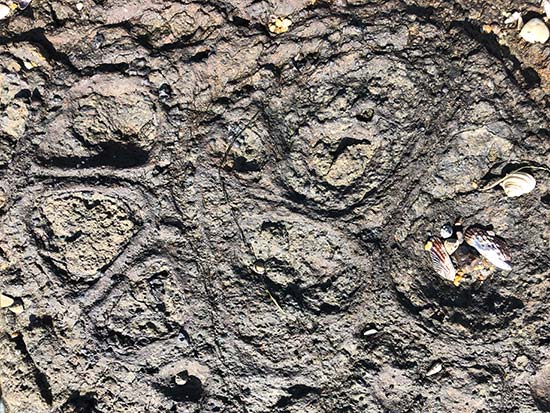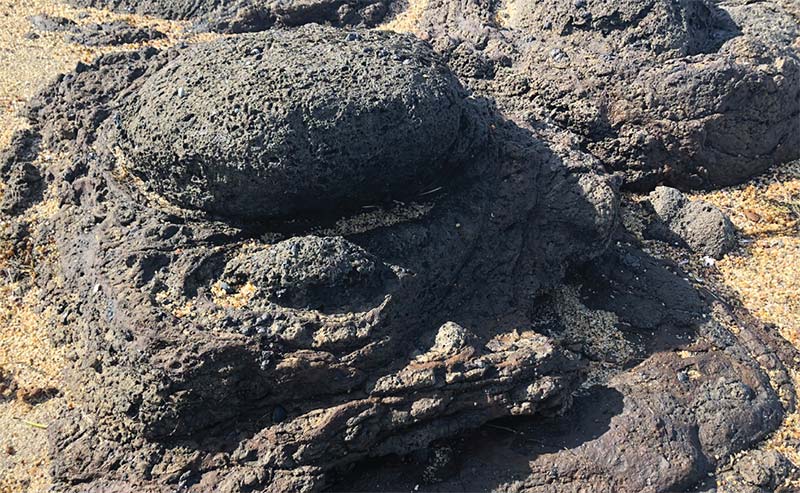Basalt flowed freely over Flinders Island in the period after Tasmania had broken free from Antarctica and commenced its northern drift to our present location.
While much of this lava is today covered over by more recent sand deposits, we can see a spectacular outcrop of this most intriguing rock at Petrifaction Bay.
Putting basalt on the map

One thing that you won't see much of on a geological map of Flinders Island is basalt. Only local areas occur at the surface. By contrast however, when you look at a magnetic image of the island there’s lots of basalt.

The basalts in Tasmania range from about 60 - 8 million years old. Only one of the basalts on Flinders Island has been dated and that goes back to 25 million years ago.
Prior to that there was a deep period of erosion on Flinders Island. Large valleys were carved into the granites and the Mathinna Bed basement.

As Tasmania was moving away from Antarctica and the Tasman Sea was opening up basalts were extruded throughout Flinders Island and northern Tasmania.
They erupted onto the surface of the land.
Essentially the basalts came up to the surface and tended to flow down into the valleys.
In the valley before the basalts flowed there would have been mainly swampy ground maybe with a few trees.
The magnetic imaging today shows these basalts in place but they’ve been covered over now by sand.

So these basalts flowed into this swampy ground with bits of trees and other organic matter.
They captured some of this plant material as they went and some of the tree particles are there but have been replaced by silica to give us petrified wood. Its interesting that as the basalt flowed over the wood it smothered it and so as there’s no oxygen the wood couldn't burn.

When we look closely at the basalts at Petrifaction Bay we can see some odd looking crystals in the rocks which are called amydales.
The rock here is a basalt but its a basalt that’s full of tiny holes and these were gas bubbles that formed at the time the lava was erupting over the land surface.
Later as the basalt cooled carbonate crystals developed in the gas bubbles and these carbonates were later replaced by irons and that’s why they are looking red now.

The basalts with a holey texture, formed when the gases escaped, are often called vesicular basalts. When the holes are later filled in by other crystals it's called an amygdaloidal basalt.

Other examples of the basalt at Petrifaction Bay show developed cooling joints. These columnar joints are usually perpendicular to the cooling surface and hexagonal in cross section.
It’s interesting that the weathering is really focusing on the edges to the columns so its making them stand out even more.
As the basalt weathers further they get this sort of texture - here’s your original basalt column and it’s been progressively weathered in from the surface to leave this corestone in the middle.

This is called spheroidal weathering.















